18 more of the 176 books nominated for the Fiction Picture Book award for you today and the count is up to 90/176! The Cybils committee has described an award-winning Fiction Picture Book as "a celebration of story and illustration, with lasting appeal for kids and/or adults. The best picture books completely excel in art, story, kid-friendliness, and adult appeal. A Cybils-winning picture book adds that special "It Factor." In message, in world-view, in connection, in humor, in reach, a book with "It Factor" rises to a higher level." (Cybils: 2009 Nominations Fiction Picture Books).
 Wishinsky, Frieda.
Wishinsky, Frieda.You're Mean, Lily Jean.
January 2009.
North Winds Press (Scholastic Canada).
Sisters, Carly and Sandy, have always played nicely together. Then, Lily Jean moves in next door and Carly, because she's the youngest, ends up being bossed around until Sandy's had enough and decides to help Carly teach Lily Jean a lesson of her own! The easily portrayed message shows children that with a little creativity (and sometimes, some guidance) children can play nicely and all have equally important roles in imaginary play without anyone in particular needing to be the "boss" or in charge of the entire game. While the pinkish, girly nature of the book may deter boys from picking it up and reading, this is a lesson that's just as important for boys as it is for girls!
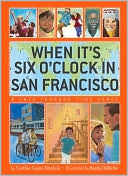 Omololu, Cynthia Jaynes.
Omololu, Cynthia Jaynes.When It's Six O'Clock in San Francisco.
July 2009.
Clarion Books.
Readers will follow children world-wide as they discover what time it is where they (the children in the book) live when it's six o'clock in San Francisco. This book (and the art, in particular) is very educational - not only does the book focus on the concept of time zones, the artwork allows for ample depiction of many, many cultures, as time zones are shared around the world. While I don't think this is a book that parents would pick out for a read aloud, I definitely could see teachers reaching for it to use as an aide when teaching time zones (I have never personally seen any other children's books related to the topic).
 Say, Allen
Say, AllenErika-San.
January 2009.
Houghton Mifflin Books for Children.
Erika, although having grown up in America, has always felt her heart belonged where the house from the picture at her grandmother's was located. As she grows, she longs to be there, living with her heritage and works and takes steps to make that dream come true. The lively, colorful illustrations seem to be accurate portrayals of Japan and the Japanese culture, allowing readers to perhaps understand Erika's longing to be there. I felt this book will allow children to see that home will be where you feel comfortable with yourself - your culture and heritage.
 Hughes, Langston.
Hughes, Langston.My People.
January 2009.
Antheneum Books for Young Readers.
In this picture book rendition of Langston Hughes' classic poem, "My People," children will hopefully take away the very important message that people come in all shapes, sizes, shades and ages, all of whom are unique for their own reasons. I don't think many children will have previously been exposed to this poem, so it will be vital that you discuss it thoroughly and perhaps even share it in the original poem format so that children are able to see the text for what it is outside of the photograph illustrations.
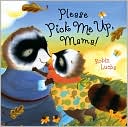 Luebs, Robin.
Luebs, Robin.Please Pick Me Up, Mama!
March 2009.
Beach Lane Books.
It's long been believed that Mamas are for snuggling and this book certainly reinforces that idea! However, while little raccoon loves Mama's sunggles, she also enjoys her sense of independence, as she's content to do things alone as well. This book would be perfect for toddlers and preschoolers who are starting to venture out on their own, beginning to explore the world for what it is. The message that toddlers need a healthy balance of independent exploring coupled with displays of affection to form secure attachments make this book a good candidate for someone looking for books surrounding the topic of separation anxiety.
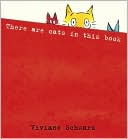 Schwarz, Viviane.
Schwarz, Viviane.There Are Cats in This Book.
November 2008.
Candlewick Press.
The cats that "live in this book" tell the story of a typical day in their life - hiding beneath blankets, playing with yarn, exploring the inside of cardboard boxes and even having pillow fights and catching fish. The lift-the-flap style illustrations will definitely appeal to the youngest of readers (3-7), but I fear that older children will quickly lose interest, as the plot isn't very developed for more advanced minds. This would however, make for a wonderful toddler storytime read aloud!
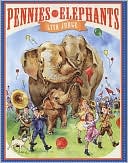 Judge, Lita.
Judge, Lita.Pennies for Elephants.
June 2009.
Disney*Hyperion Books.
Based on the events of 1914 when the children of Boston worked together to raise $6,000 to buy the first three elephants for Boston's Franklin Park Zoo, Pennies for Elephants is a book that can reach all, from the youngest (animal fans) to the oldest (who may even remember hearing about this event having been a child at that time). The book was very representative of fashion and appearances during the early 1900's and shares with children a very powerful message - children can accomplish great things when differences are set aside and they unite and put their hearts and minds together.
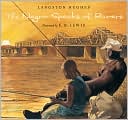 Hughes, Langston.
Hughes, Langston.The Negro Speaks of Rivers.
January 2009.
Disney*Jump at the Sun Books.
I've noticed during my time working in schools that children often seem lost when it comes to understanding poetry. Langston Hughes' poem The Negro Speaks of Rivers, presented here in picture book form, is shared in a way that allows children to begin visualizing the importance of water and rivers played in the lives of African Americans throughout history. This concept of water in the lives of African Americans is accented by E.B. Lewis' water color scenery and the accurate illustrations of African American faces. I found that this book would likely be appropriate for mainly older children who have a basic understanding of what African Americans have dealt with throughout their lives but is definitely usuable with younger children when combined with a discussion about the poem!
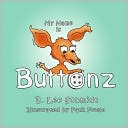 Schmidt, B. Lee.
Schmidt, B. Lee.My Name is Buttonz.
June 2009.
Author House.
Buttonz is a very unique ChiWeenie dog who shares all of the things that he likes to do that makes him unique, right down to his own name that's spelled with a "z" instead of an "s." Appropriate for young children (ages 5-8), this book would make for a perfect ice-breaker activity come the start of a new school year, as it could easily celebrate the uniqueness of all children.
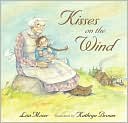 Moser, Lisa.
Moser, Lisa.Kisses on the Wind.
September 2009.
Candlewick Press.
Lydia is saddened by the thought of moving thousands of miles away from her grandmother. However, a brown leather book holds the stories they've shared near and dear to Lydia's heart, allowing her granmother to always be with her. The story shared here allows children to see that memories and stories will carry iwth you no matter where you are, allowing love to remain depsite distance. This is a perfect "family" gift, as it will likely inspire all family members to write down the stories they wish to remember for generations to come!
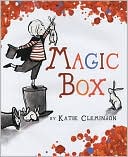 Cleminson, Katie.
Cleminson, Katie.Magic Box.
June 2009.
Disney*Hyperion Books.
For Eva's birthday, she's given a box - a magic box! And does magic ever happen as Eva's first wish comes true in more ways than she can imagine! Luckily, the magic box has the ability to end magic as quickly as it begins! This book is a perfect read aloud for your little one (ages 3-7) on his/her birthday. It seems likely that older children will probably lose interest quickly, as they tend not to believe in magic, however, I think that adults will enjoy the watercolor/sketched illustrations set against the splatter painted background as much as I did! I'll definitely be adding this book to my birthday shelf for my someday classroom (as part of each child's birthday celebration, I hope to allow them to choose the daily read aloud from the birthday shelf)!
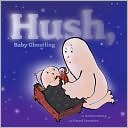 Beaty, Andrea.
Beaty, Andrea.Hush, Baby Ghostling.
August 2009.
Margaret K. McElderry Books.
Baby Ghostling is ready to go to bed but needs mother's reassurance as before he heads off to sleep as he's afraid of the (not-so) childish bedtime "monsters," so to speak. I think young children (ages 3-8) will find this book funny, as like children are afraid of ghosts, this little ghost is afraid of children! What's to be learned here is that ghosts and children really have nothing to fear, as in the minds of each other, both are really just make-believe!
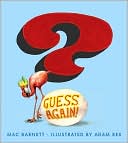 Barnett, Mac.
Barnett, Mac.Guess Again!
September 2009.
Simon & Schuster Books for Young Readers.
Guess again! The title really does tell all there is to tell about this story! Readers are encouraged to guess what the silhouette is - and will likely need to be told "Guess Again!" as the pictures and illustrations are meant to be tricky to young eyes! Add the level of engagement to the bold, colorful lift-the-flap illustrations and hesitant readers will become actively envolved in the reading process and will be well on their way to developing a love of books! This would make for a wonderful preschool read aloud during storyhour!
 Krensky, Stephen.
Krensky, Stephen.Chaucer's First Winter.
October 2009.
Simon & Schuster Books for Young Readers.
Little bear Chaucer is about to experience his first winter. His parents prepare his to spend the winter hibernating like bears do, but Chaucer has other plans! Children are likely to sympathize with Chaucer's desire to stay up and play rather than to "hibernate," as many children don't find bedtime their favorite time of the day! This is a perfect read aloud option during an Animals in Winter themed unit.
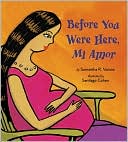 Vamos, Samantha.
Vamos, Samantha.Before You Were Here, Mi Amor.
May 2009.
Viking.
Before You Were Here, Mi Amor, follows one family as they anxiously await the arrival of their newest family member. Interweaved throughout the story is bits of the Spanish language, making this book perfect for children learning Spanish language or for bilingual families, as context clues from the illustrations enable readers to discover what the Spanish words mean in English. This book would make a perfect gift for expectant moms and new babies. Everyone will likely appreciate this book as it shows just how much love is experienced while awaiting the arrival of a new baby!
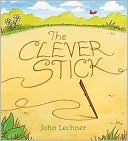 Lechner, John.
Lechner, John.The Clever Stick.
July 2009.
Candlewick Press.
A stick, sharp in more ways that one, discovers that even without a voice, there are ways to express himself. The watercolor and pencil-drawn illustrations take readers on an adventure as they quickly learn a message of utmost importance - actions speak louder than words... you don't need to have a voice to be able to express yourself. While children enjoy the story of a clever stick, adults are sure to enjoy the subtelties that children aren't likely to catch on to - since falling out of the tree, "he had been sharp," both in mind and shape!
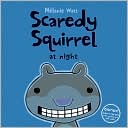 Watt, Melanie
Watt, MelanieScaredy Squirrel at Night.
February 2009.
Kids Can Press.
Readers follow along as Squirrel protects himself from the unwanted overnight visitors he's afraid of and the plan he puts into action (which eventually backfires on him). However, he does manage to overcome some of his fears in the process! Like all of the books in the Scaredy Squirrel series, this will be every bit as appealing to children and parents, for there's always a lesson to be learned - most dreams you experience are just in your imagination. More often than not, nothing horrible really happens!
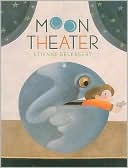 Delessert, Etienne.
Delessert, Etienne.Moon Theater.
July 2009.
Creative Editions.
A young boy describes how night comes about - how the moon rises and the stars make their way into the night sky and his role in the whole event. The two-page illustrations are enough to tell a story alone, so children not yet able to read words will certainly be able to enjoy the story as well! This would make for a wonderful bedtime read aloud!
If you're interested in finding out more information about any of the books reviewed or if you'd like to purchase the books, click the cover image for a link to Amazon.com.








0 comments:
Post a Comment